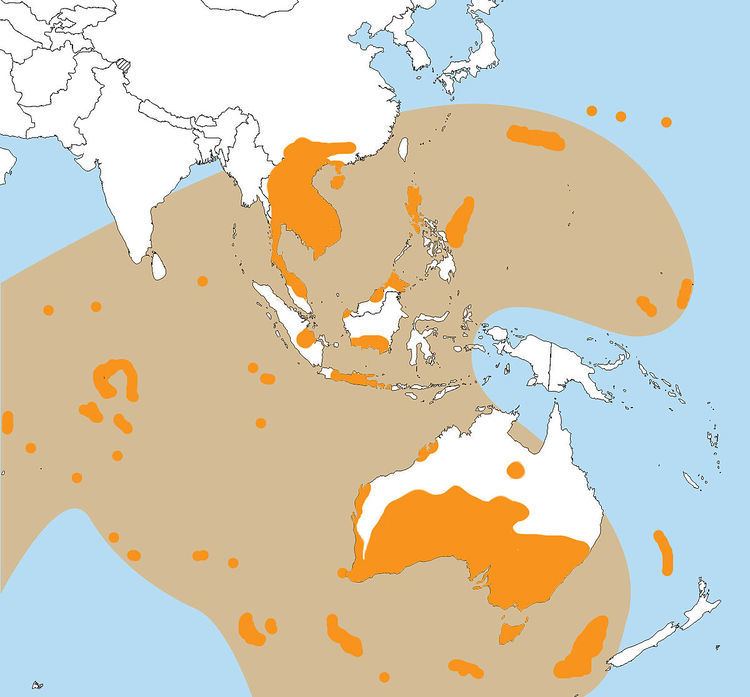 | ||
The Australasian strewnfield is the youngest and largest of the tektite strewnfields, with recent estimates suggesting it may cover 10%-30% of the Earth's surface.
Contents
Details
The c. 790,000-year-old strewnfield (Schneider, 1992) includes most of Southeast Asia (Thailand, Laos, Vietnam, Cambodia, and Southern China). The material from the impact stretches across the ocean to include the Philippines, Indonesia, Malaysia, and Java. It also reaches far west out into the Indian Ocean, and south to Australia and Tasmania. Since the 1960s, it has been accepted that the strewn field included Hainan in southern China to Australia or about 10% of the Earth's surface. This was later extended by finds in Africa and Tasmania to 20%. Recent additional finds in northern Tibet and Guangxi increased the strewnfield to about 30% of the Earth's surface, or almost 150 million km2.
Impact crater
The Earth Impact Database lists about 25 known craters less than a million years old, almost all of which are less than 2 km in diameter. The notable exception is the 14-km Zhamanshin crater in Kazakhstan which at one time (Glass, 1979) was proposed as the source of the Australasian strewn field.
However, due to the enormous size of the Australasian strewn field, the impact crater has been conjectured to be significantly larger than the known ones. Schmidt and Wasson (1993) suggested it could be a 14–17 km crater beneath the Mekong Valley, Schnetzler (1996) considered a 35–40 km structure in southern Laos, Hartung and Koeberl (1994) proposed the elongated 100 km x 35 km Tonlé Sap lake in Cambodia (visible in the map at the side), while Glass (1994) estimated it to be between 32 and 114 km in diameter in Cambodia. Glass (1999) also suggested southern Laos or an adjacent area as a possible source. More recently, Lee and Wei (2000) gave its size as 90 to 116 km and P. Ma et al. (2001) using beryllium-10 postulated the crater as between southern Laos and Hainan, possibly within the Gulf of Tonkin.
Alternatively, Wasson, who also found layered tektites in central Thailand, conjectured it could have been a multiple impact event spread out over the region, though it seems this scenario also raises substantial problems.
The Wilkes Land crater in Antarctica has also been proposed as a possible source.
It has been suggested that the impact may have triggered the Brunhes–Matuyama reversal.
Homo erectus
Archeological artifacts found with these tektites in Baise, Guangxi in southern China indicates that a Homo erectus population was living in the area during and after the impact.
Stone tools have been found within the debris field along with a charcoal layer likely caused by fires from the impact. It has been suggested that the subsequent local deforestation after the fires allowed this population easier access to stones useful for tool-making.
